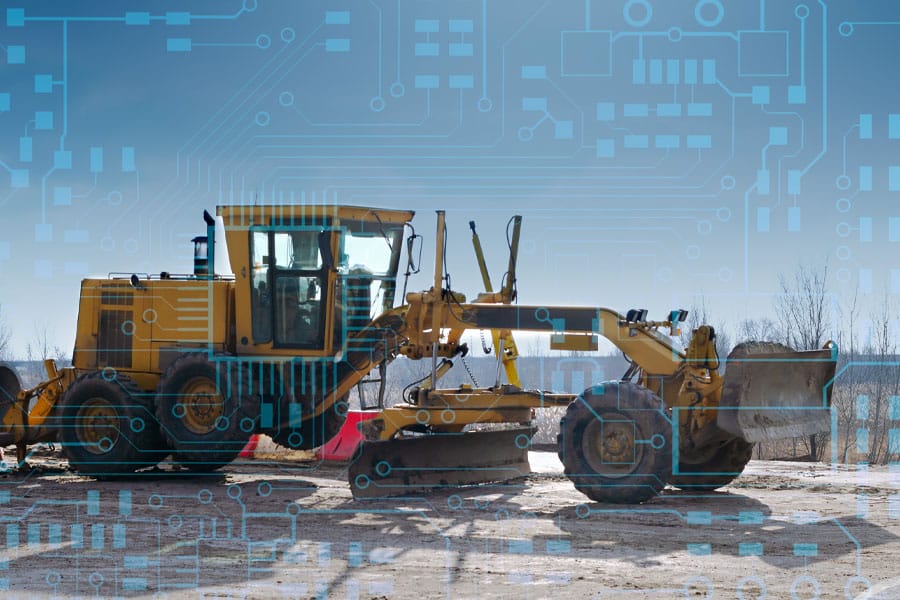The relatively poor productivity record of the construction industry is an all-too-familiar issue for those working in the sector.
According to the UK’s data collection body, the Office for National Statistics (ONS), average productivity levels in the construction sector have remained consistently below the UK industrial average and have grown more slowly until recently.
A report by US consultancy McKinsey has suggested issues responsible for low productivity in construction included subpar project management and execution, inadequate design processes and underinvestment in skills development, R&D and innovation.
So could the more widespread use of innovations and technology improve this less-than-satisfactory situation? The short answer to that question is “yes.”
Building information modeling (BIM) is already well on its way to revolutionizing the way buildings are designed and delivered. Meanwhile, other techniques, such as modular building and off-site manufacturing, have the potential to both speed up delivery and improve the quality of our built environment.
What is the Internet of Things in construction?
Another factor set to take hold and transform many aspects of how the sector does its job is the Internet of Things (IoT). Part of what many have labeled Industry 4.0 or the Fourth Industrial Revolution, IoT concerns the connectivity of the things we use in our work, as well as other activities.
As a concept, IoT has been around for years. In 2016, global technology company IBM defined it as “the concept of connecting any device (so long as it has an on/off switch) to the internet and to other connected devices.
“The IoT is a giant network of connected things and people—all of which collect and share data about the way they are used and about the environment around them,” it added.
Oracle suggests it “describes the network of physical objects – ‘things’ – that are embedded with sensors, software and other technologies for the purpose of connecting and exchanging data with other devices and systems over the internet.”
Such devices range from ordinary household objects to sophisticated industrial tools.
But pieces of IoT equipment and items of people’s clothing all rigged out with sensors? How could this benefit construction?
The benefits of IoT in construction
According to Blackreach, a US consultancy, IoT solutions “go beyond a connected device.”
Ramped up in scale, the use of IoT-enabled equipment and other assets has the potential to revolutionize the way construction staff work on-site, performing “hundreds of tasks daily with speed and accuracy without compromising on cost-effectiveness and safety.”
Blackreach highlights no fewer than 14 areas where using IoT in construction can overhaul established practices. These include augmented reality, building design, concrete curing, predictive and preventive maintenance and delivery of environmentally friendly buildings.
Smart devices, smart buildings
In terms of how IoT is applied across construction activity, IoT-enabled devices – sensors, cameras, location trackers, etc. – have the potential to significantly help the built environment become more efficient through high-speed reporting, reducing mistakes on-site and helping deliver a project more quickly and without comprising quality or safety during the building process.
Supplier relationships can be bolstered thanks to better data collection, allowing materials to be procured and delivered to sites more efficiently. Tools fitted with sensors can allow their location to be followed by a contractor, making for better use of equipment and preventing theft.
Smart battery technology can advise when and where a power pack was last charged and notify a contractor when it gets below a certain power level, enabling better use of operators’ time.
And with wearable technology, like motion sensors and other trackable tools, site workers can be more easily monitored for safety and productivity assessment.
Along with data-sharing technology, IoT in construction will not only facilitate the physical delivery of new projects; it will also enable completed buildings to be more efficient in their day-to-day operation.
We are increasingly seeing more “smart” buildings, which feature an array of sensors to determine things like how many people are occupying a space or specific room and thereby adjust lighting, heating or cooling accordingly.
Convene, a US-based venue and meeting space company, has taken two floors in the recently completed 22 Bishopsgate office development in London. Its venue areas feature a range of in-built technology, including sensors that can detect how many people are in an area and ensure the right level of air-conditioning.
In addition to construction site IoT, this technology is being deployed widely in domestic homes. Households can use their smartphones to switch on tech-enabled heating systems with the tap of an app. Other devices include web-enabled intercoms, which allow residents to check out and talk to visitors even when they’re not at home.
Bright future for construction and IoT
How will IoT be deployed in years to come? The possibilities will increase over time, but the cost savings of IoT in construction are sure to prove attractive to potential users. Beca, the New Zealand-headquartered engineering consultant, cites research that suggests IoT in Australia alone will save 22–29% of total costs in construction, equating to AUS$75–96 billion ($50–64 billion USD) in annual benefits.
In the increasingly digital age, the collection and analysis of data will ultimately become second nature to the building industry. Progress may be slower than some would like since construction is so wedded to the traditional ways of doing things. And alongside the benefits of IoT in construction, there will inevitably be issues to deal with, such as data protection.
But clients know what they want. It will often be their demands – that their buildings are built and operate more efficiently and with less impact on the environment, that they are “smarter,” that they are more responsive to occupiers’ needs – which will do much to drive the construction sector’s adoption of technology.
And it’s not just clients. With costs an ever-present issue for developers and contractors, everyone will have to get on board with IoT in construction, Industry 4.0 and the other digital approaches that other sectors have already recognized and begun to use as a matter of course.
The problems facing economies around the world, impacting the ability to better deliver construction projects, could also prompt the advancement of technology across the sector in unforeseeable ways.











